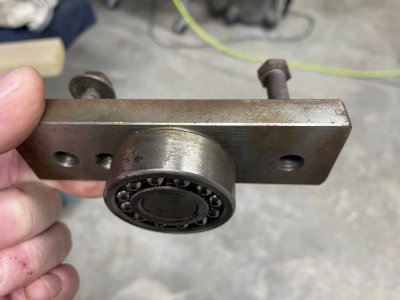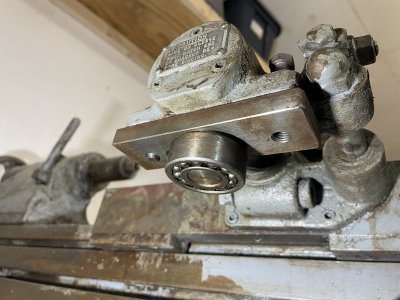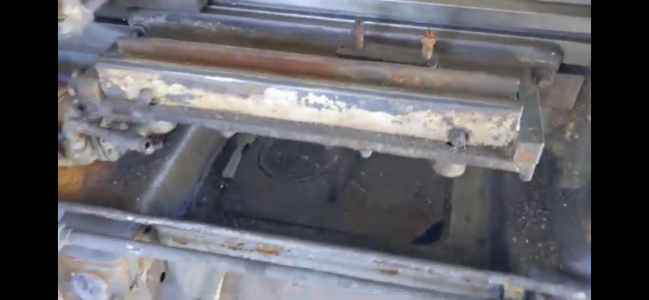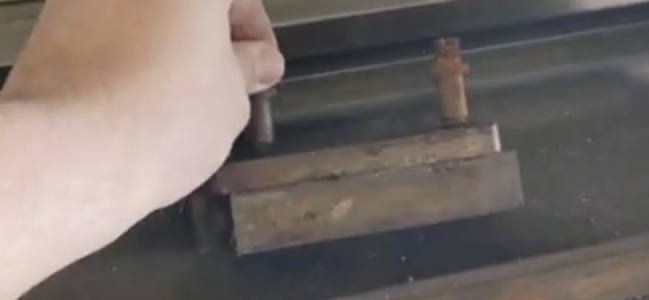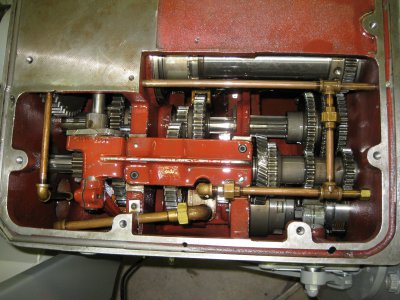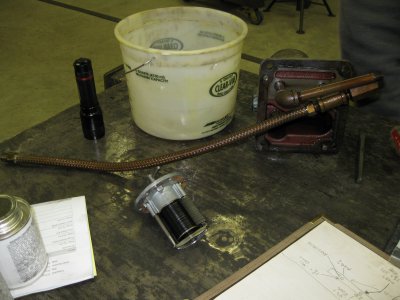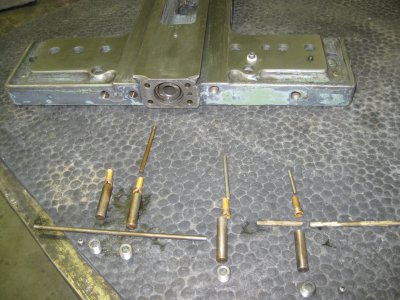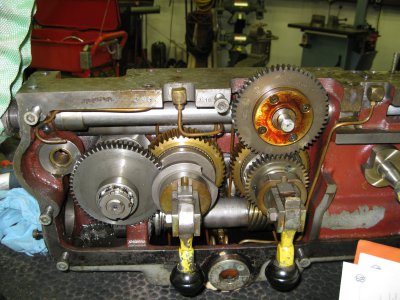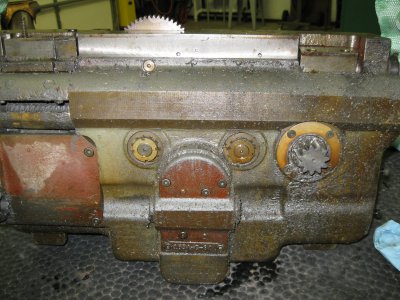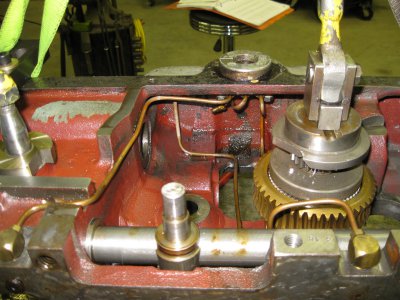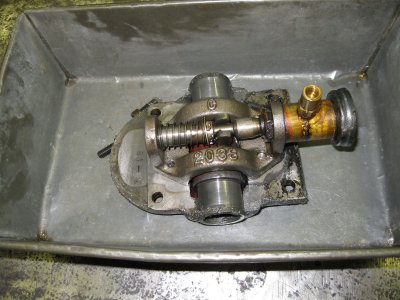- Joined
- Jan 9, 2023
- Messages
- 239
I’d say it’s good news that it’s in great condition. Flushing headstocks can be risky business. I try to stay away from the spindle bearings. I use a mixture of kerosene and DTE Heavy Medium oil. I also use a small electric pump (the kind you can find at Harbor Freight) and a bucket of this solvent mixture. The pump discharges solvent through a fairly fine hydraulic filter and an adapter up through a hose with a small copper tubing wand with a butterfly valve. I also connect a hose barb to the drain of the headstock along with some clear tubing back to the bucket. All this allows me to use less solvent because it is recirculated.Thanks for the advice. I’ve got some good information when I’m ready to tackle it. By the way, I pulled the main gearbox lid off to check the overall integrity in there and it’s super clean inside with no damage that I could find. There’s still some amount of oil in the bottom of the sump although there’s no telling how much. Do you have a good method for flushing it out before filling it?
